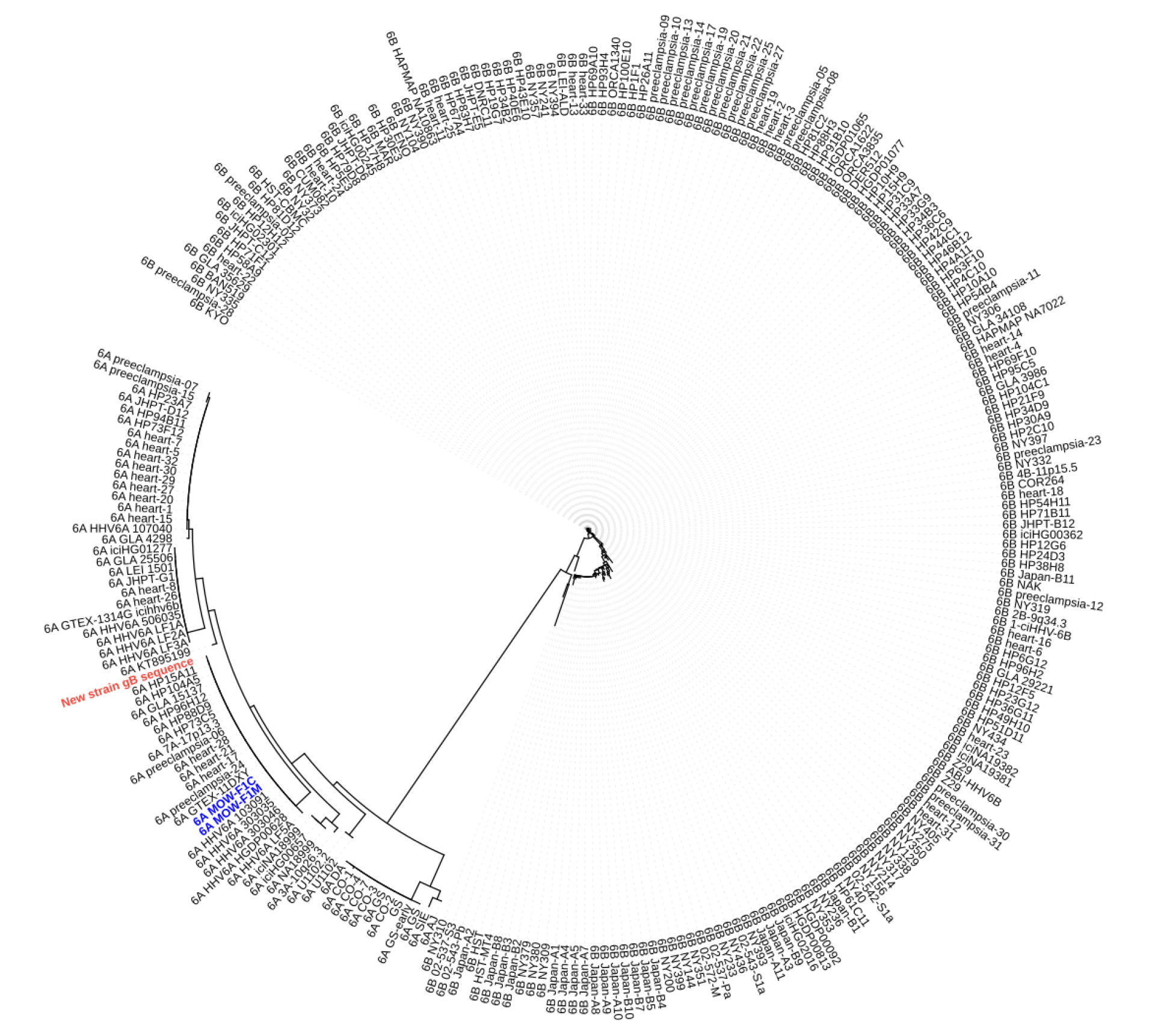
This article is an open access article distributed under the terms and conditions of the Creative Commons Attribution license (CC BY).
ORIGINAL RESEARCH
Familial case of inherited human herpesvirus 6A with phylogenetic assessment
1 Pediatric Research and Clinical Center of Infectious Diseases of the Federal Medical Biological Agency, Saint Petersburg, Russia
2 Saint Petersburg State University, Saint Petersburg, Russia
3 Ott Research Institute of Obstetrics and Gynecology, Saint Petersburg, Russia
4 ITMO University, Saint Petersburg, Russia
5 Pavlov First Saint Petersburg State Medical University, Saint Petersburg, Russia
Correspondence should be addressed: Olga V. Goleva
Professor Popov, 9, Saint Petersburg, 197022, Russia;
Author contribution: Goleva OV, Babachenko IV, Tian NS — study planning, data acquisition, analysis and interpretation, manuscript draft; Danilov LG — bioinformatics analysis, search for analytical papers; Kusakin AV — study planning, literature review, data acquisition, analysis and interpretation, bioinformatics analysis, constructing a phylogenetic tree, manuscript draft; Eismont YuA, Chukhlovin AB — study planning, data acquisition, analysis and interpretation; Krylov AV — data acquisition, analysis and interpretation; Glotov OS — research supervision, data analysis and interpretation, manuscript draft.
Compliance with ethical standards: the study was approved by the Ethics Committee of the Pediatric Research and Clinical Center for Infectious Diseases of FMBA of Russia (protocol № 107 dated November 27, 2018) and conducted in accordance with the latest edition of the Declaration of Helsinki. Patients and their legal representatives submitted the informed consent to the study participation.



